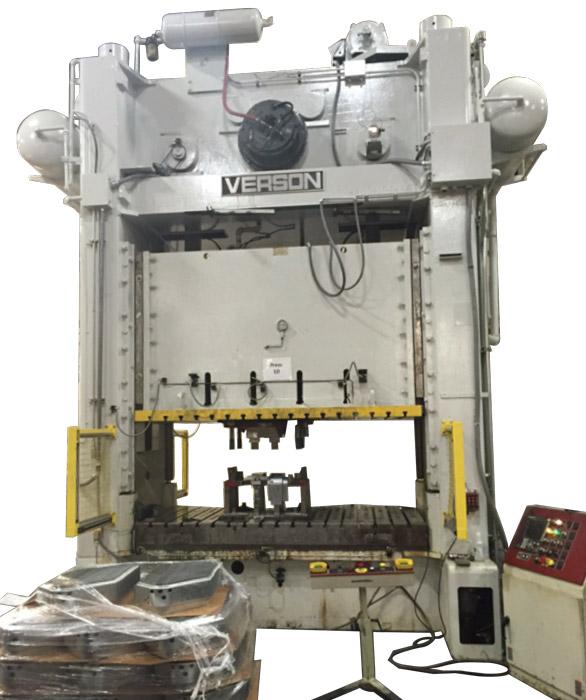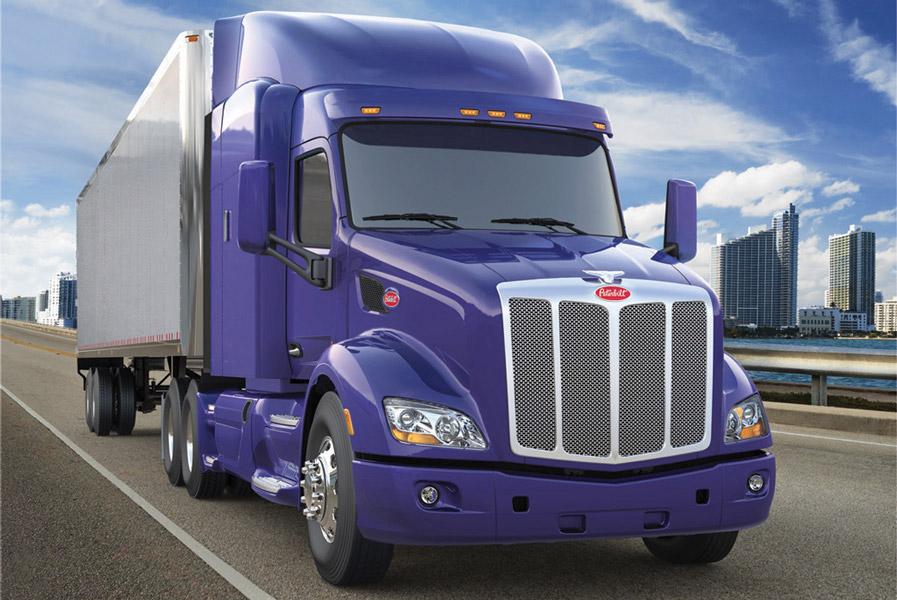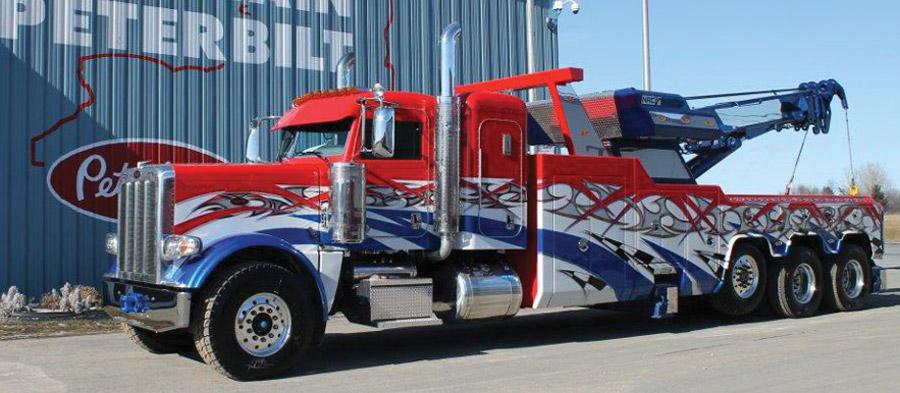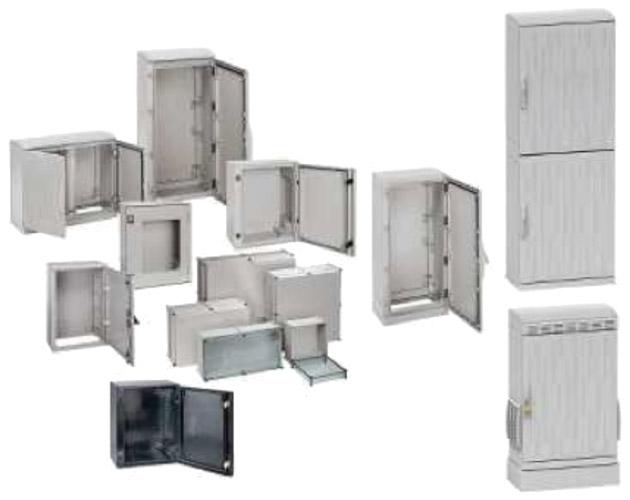Contributing editor
- FMA
- The Fabricator
- FABTECH
- Canadian Metalworking
Categories
- Additive Manufacturing
- Aluminum Welding
- Arc Welding
- Assembly and Joining
- Automation and Robotics
- Bending and Forming
- Consumables
- Cutting and Weld Prep
- Electric Vehicles
- En Español
- Finishing
- Hydroforming
- Laser Cutting
- Laser Welding
- Machining
- Manufacturing Software
- Materials Handling
- Metals/Materials
- Oxyfuel Cutting
- Plasma Cutting
- Power Tools
- Punching and Other Holemaking
- Roll Forming
- Safety
- Sawing
- Shearing
- Shop Management
- Testing and Measuring
- Tube and Pipe Fabrication
- Tube and Pipe Production
- Waterjet Cutting
Industry Directory
Webcasts
Podcasts
FAB 40
Advertise
Subscribe
Account Login
Search
Manufacturer revives stamping department with overhaul, press rebuild
Consolidates work from two presses onto one
- By Kate Bachman
- November 11, 2015
- Article
- Bending and Forming

Rebuilding a 400-ton mechanical press and outfitting it with updated controls, QDC, and safety equipment was the first major thrust of Quality Industries’ overhaul of its stamping department and effort to recommission it. Photo courtesy of Quality Industries, La Vergne, Tenn.
Quality Industries made a U-turn on its decision to let its stamping department stall and has reignited the department’s restart with a press retrofit, quick die change (QDC) equipment, and a new press.
The increased uptime that resulted from both the press rebuild and the QDC equipment installation has freed up the press to run all of the work that used to require two presses. The company plans to perform more rebuilds next year.
Capacity Needs Expand With Expanded Customer Base
Robert and Georgianna Russell founded Quality Industries in 1972 in their Nashville garage, making stainless steel food service equipment. Bob Russell developed the patent for the breading and marinating equipment used in KFC franchises all over the world, and the business rapidly outgrew the garage.
The company has grown into an integrated contract manufacturer with $100 million-plus annual sales. It provides engineering services, component parts, subassemblies, and finished products, operating out of a 267,000-square-foot plant in nearby La Vergne, Tenn. In 2011 the manufacturer opened a second plant outside of Dallas in Denton, Texas, to increase both capacity and capabilities as well as to be close to a major client. That plant is already busting its seams and is moving to a larger facility in Denton.
The company’s diverse customer base comprises Class 7 and 8 heavy trucks and other vehicles in transportation, renewable energy, and electronics. Its customers are some of the world’s largest in their respective industry segments.
Quality Industries makes the exterior skin of global trucking company Peterbilt’s “legacy” truck sleeper box out of 0.063-in.-thick 5052 H32 aluminum precoated with a primer epoxy paint and heavy-gauge aluminum extrusions (see Figure 1). The fabricator also makes components for the cab structure.
The manufacturer’s second-largest customer is one of the world’s largest utility-scale solar installers. It fabricates, welds, and assembles the mounting systems for single-axis tracking systems out of structural steel (see Figure 2).
Another customer is Miller Industries, one of the largest wrecker distributors in the world (see Figure 3).
The fourth major customer the manufacturer supplies is a global leader in the electrical enclosure industry, Schneider Electric, for which it makes the switchgear cabinetry for outdoor electrical enclosures (see Figure 4).
To meet the capacity requirements of this expanding and high-profile customer base, not only did Quality Industries need a larger facility, it needed to have all four wheels on the ground. In-house stamping capability was one of those wheels.

Figure 1
Quality Industries makes the exterior skin of
Peterbilt’s truck sleeper box and components
for its cab structure. Photo courtesy
of Peterbilt, Denton, Texas.
Stamping Hits Speed Bump on Comeback Trail
Like other enduring manufacturers, over the course of its 40-plus years, Quality Industries evaluated its core competencies and considered phasing out some capabilities. In 2005, when the U.S. stamping industry was experiencing international migration, Quality Industries management decided to phase out its stamping capacity in favor of outsourcing it. After all, in dollar terms, the stamped parts represented only a small percentage of sales, and plenty of outsourcing capacity was readily available. “That and we were going to use a soft tool method, such as CNC punches and press brakes, and get away from stamping. So management quit investing money in the stamping department,” said Chris Fann, senior vice president of operations (see Figure 5).
Without regular MRO, the company’s presses fell into chronic disrepair, said Ken Ham, vice president of engineering and technical services (see Figure 6). “They were not maintained consistently and press wear was hard on dies. We had trouble with the presses tearing up tools because they didn’t shut squarely.”
“One of our biggest concerns was the capacity constraint in our press area,” Fann added. The company started racking up expedited shipping costs because of production delays. “Press problems were affecting timely shipment for our customers. We were making our delivery time but missing our shipment deadlines. We were a day late in most cases.”
Management re-evaluated the decision to phase out stamping capacity. Several discussions were held about ways to improve delivery performance. Press rebuilds were at the center of those discussions, Fann said.
The stampings are mostly component parts of assemblies, often powder-coated, so isolating their value was complicated, Fann said. “From a final output, they’re very low. A stamped component may not be more than $1.50 of a $500 assembly. None of our stamped parts are shipped directly to a customer as a stand-alone product. But almost everything we have has some level of stamped parts in it.”
Ham said, “When the current team evaluated the problems, saw the amount of stamping that we do, and the complexity in the parts we stamp, they concluded that we couldn’t afford to outsource the stamping. There were too many low-run items, too many tools, too many changeovers, and the number of different parts that we run is significant.
“We have so many diverse processes. It’s another part of us,” Ham said.
Press Rebuild a Go
Company management decided to overhaul the entire stamping area, including a $290,000 press rebuild with QDC capabilities, and a new press as part of its $13 million capital expenditure. Another part of that capex program was updating its powder coating operation to be more efficient and more environmentally friendly.
“We did a lot of data gathering before we decided to spend hundreds of thousands of dollars on stamping equipment. We looked at what we were doing and did a business case analysis. If we made improvements to the machine and improved setup times, what was our payback?” Fann said.
“We concluded that we could invest the $290K and see a two-year payback. Seeing how much we were spending every day in labor for repair and maintenance helped drive that conclusion. It came down to reducing labor and what we were spending to repair the old machine, and the uptime we would see,” Fann said.

Figure 2
Quality Industries fabricates, welds, and
assembles the mounting systems for singleaxis
tracking systems. Photo courtesy of
First Solar, Tempe, Ariz.
“We had to be able to stamp in-house,” Ham said.
Beginning the Rebuild
In the company’s fleet of 14 presses are four 400-ton presses. The rebuild plan included all four. “We started with one particular 400-ton press because it was in the worst mechanical condition. We went through the whole press,” Fann said.
Part replacements included:
- Shut height adjust motor
- Bearings
- Slides
- Motors
- Pumps
- Hydraulic system
- Brakes
- Control system
- Light curtains, other safety equipment “A shut height adjust motor went out on it, and it was going to take tens of thousands of dollars just to fix that. So we tore it apart completely. We spent around $290,000 on that one press, but we took it all the way down … replaced all the bearings and slides; replaced the motors and pumps; put a new hydraulic system on it. We put brakes and a new SmartPAC2 Wintriss control system on it, plus light curtains and other safety equipment,” Fann said.
ABCs of QDC
Ham said outfitting the press with a QDC system was integral to the rebuild. The company installed Forwell Precision Machinery bolster rollers, lifters, and hydraulic clamps. “We integrated the bolster rollers, lifters, and hydraulic clamps, both top and bottom, so we can install the die and put the hydraulic clamps on it, turn the switch, and it’s in the press ready to run.”
A battery-powered electric, dual-stage die change cart was purchased to interface with several presses. The total cost for the QDC die cart was $197,000.
New Press Rounds out Pressroom
As part of the company’s regeneration efforts, Quality Industries bought a new 260 Stamtec coil-fed mechanical press in a separate investment (see Figure 7). “We had a very old 150-ton, C-frame press that quit. We used it on a daily basis to single-hit small dies for a lot of product. It was going to cost $60,000 to put it back in working condition, so we decided we didn’t want to invest that kind of money in that press,” Fann said.
The new press comes standard with the most updated safety technology and QDC capabilities, and it increases production capability. “We are able to run small progressive dies in the new press; before we had these outsourced,” Fann said.
Upping the Uptime Double-time, Energy Savings
The resulting uptime gained from both decreasing the downtime required for repairs and maintenance and increasing the uptime gained from installing the QDC system has allowed the company to consolidate all of the work it was running on two presses onto one.
“What it’s done for us is that with both the uptime that we gained from the press being more reliable and amount of time we’ve saved by reducing our setups and changeovers using QDC, we have taken what we were running on two 400-ton presses and run it on one. Plus, we don’t have to go buy stampings somewhere. We can stamp them ourselves for the products we make,” Ham said. “That’s what the in-house stamping does for us here.”

Figure 3
Quality Industries makes components for
Miller Industries that end up on a Peterbilt
truck. Photo courtesy of Miller Industries,
Ooltewah, Tenn.
Quality Industries has seen improvement in its delivery times as well. “Bringing these two pieces of equipment online has helped relieve the capacity constraint that was affecting delivery to our customers,” Fann said. “As these both came online, we have monitored and tracked our delivery times, and that has improved as a result of added press capacity. So it helped eliminate expediting costs too.
“The No. 1 reason we rebuilt the press is because we had to have the reliability. Adding the QDC while we were doing the press rebuild was a productivity benefit,” Fann said.
The retrofit offered energy savings as well because the rebuilt press with QDC now runs the workload of two, so one of the old presses was taken out of commission. One motor uses half the energy of two motors.
The stamping department plans on rebuilding two more presses next year. “We’re still spending money left and right on repair and maintenance on the other old machines,” Ham said. The next two presses to be rebuilt in 2016 are another 400-ton press and a 600-ton.
Quality Industries Inc., 130 Jones Blvd., La Vergne, TN 37086, 615-793-3000, terry.tidwell@qualityindustries.com, www.qualityindustries.com.
About the Author

Kate Bachman
815-381-1302
Kate Bachman is a contributing editor for The FABRICATOR editor. Bachman has more than 20 years of experience as a writer and editor in the manufacturing and other industries.
subscribe now

The Fabricator is North America's leading magazine for the metal forming and fabricating industry. The magazine delivers the news, technical articles, and case histories that enable fabricators to do their jobs more efficiently. The Fabricator has served the industry since 1970.
start your free subscription- Stay connected from anywhere

Easily access valuable industry resources now with full access to the digital edition of The Fabricator.

Easily access valuable industry resources now with full access to the digital edition of The Welder.

Easily access valuable industry resources now with full access to the digital edition of The Tube and Pipe Journal.
- Podcasting
- Podcast:
- The Fabricator Podcast
- Published:
- 04/16/2024
- Running Time:
- 63:29
In this episode of The Fabricator Podcast, Caleb Chamberlain, co-founder and CEO of OSH Cut, discusses his company’s...
- Industry Events
16th Annual Safety Conference
- April 30 - May 1, 2024
- Elgin,
Pipe and Tube Conference
- May 21 - 22, 2024
- Omaha, NE
World-Class Roll Forming Workshop
- June 5 - 6, 2024
- Louisville, KY
Advanced Laser Application Workshop
- June 25 - 27, 2024
- Novi, MI
































